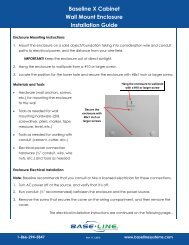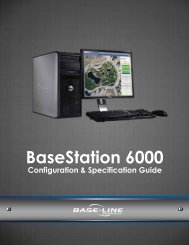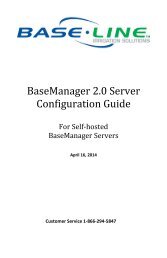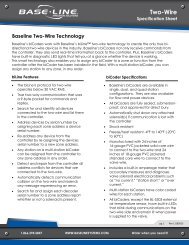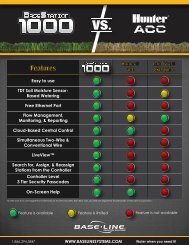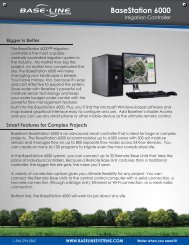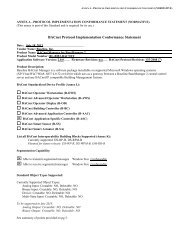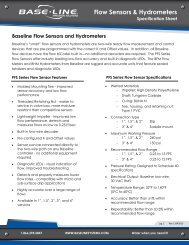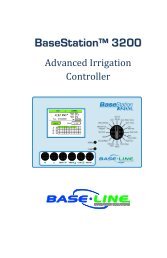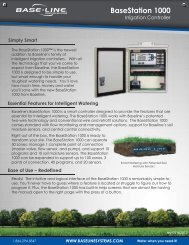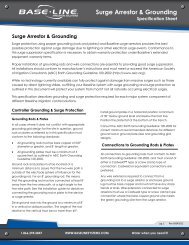BaseStation 3200 User Manual â 11.7.5.15 ... - Baseline Systems
BaseStation 3200 User Manual â 11.7.5.15 ... - Baseline Systems
BaseStation 3200 User Manual â 11.7.5.15 ... - Baseline Systems
Create successful ePaper yourself
Turn your PDF publications into a flip-book with our unique Google optimized e-Paper software.
<strong>BaseStation</strong> <strong>3200</strong> Advanced Irrigation Controller <strong>Manual</strong><br />
Choosing the Sensor Location<br />
You will achieve the best results by locating the biSensor in an area that is average for the zone and ideally for the<br />
entire scheduling group. Avoid the following areas:<br />
• Drainage areas where irrigation or rainwater pools or is channeled<br />
• Areas immediately around hardscapes or that receive runoff water from hardscapes or buildings<br />
As long as the location of the sensor is average for the zone, you should achieve excellent water efficiency.<br />
Dealing with Slopes and Berms<br />
Steep slopes and berms are possibly the most difficult landscape areas to irrigate efficiently. The main issue is<br />
runoff, but often subsurface drainage issues result in low areas that get soaking wet and high areas that are bone<br />
dry. When a berm is constructed, the central mass is typically compacted, which can also cause water movement<br />
and drainage issues.<br />
Soil moisture sensors are an excellent tool to optimize watering for slopes and berms because the sensor can<br />
detect how much irrigation water is actually infiltrating the upper levels of the slope or berm.<br />
Take care when you set the soak and cycle times for slopes and berms – for some slopes, you might need to break<br />
the total run time into five or more cycles.<br />
Optimal biSensor Placement for Slopes and Berms<br />
If the slope or berm is irrigated as a part of a larger zone that is mostly level, <strong>Baseline</strong> recommends that you place<br />
the sensor in the larger level area. However, for most efficient results, set up separate zones to water the top,<br />
middle, and bottom of slopes and berms.<br />
Burying the biSensor<br />
Install the biSensor according to the installation instructions that are included with it. When installing a biSensor in<br />
an established landscape, avoid disturbing the surrounding soil in order to reduce the chance that adjustments will<br />
be needed later.<br />
In general, you should install the biSensors in the top 1/3 of the root zone for the plant that is being irrigated. In<br />
the case of turf grass, the top of the sensor blade should be 2 inches to 3 inches from the bottom of the thatch<br />
layer.<br />
Note: Burying the moisture sensor too deep can cause poor results. If the sensor is deeper than the top 1/3 of the<br />
root zone, these roots can become too dry and the plants may become stressed.<br />
Page 5



